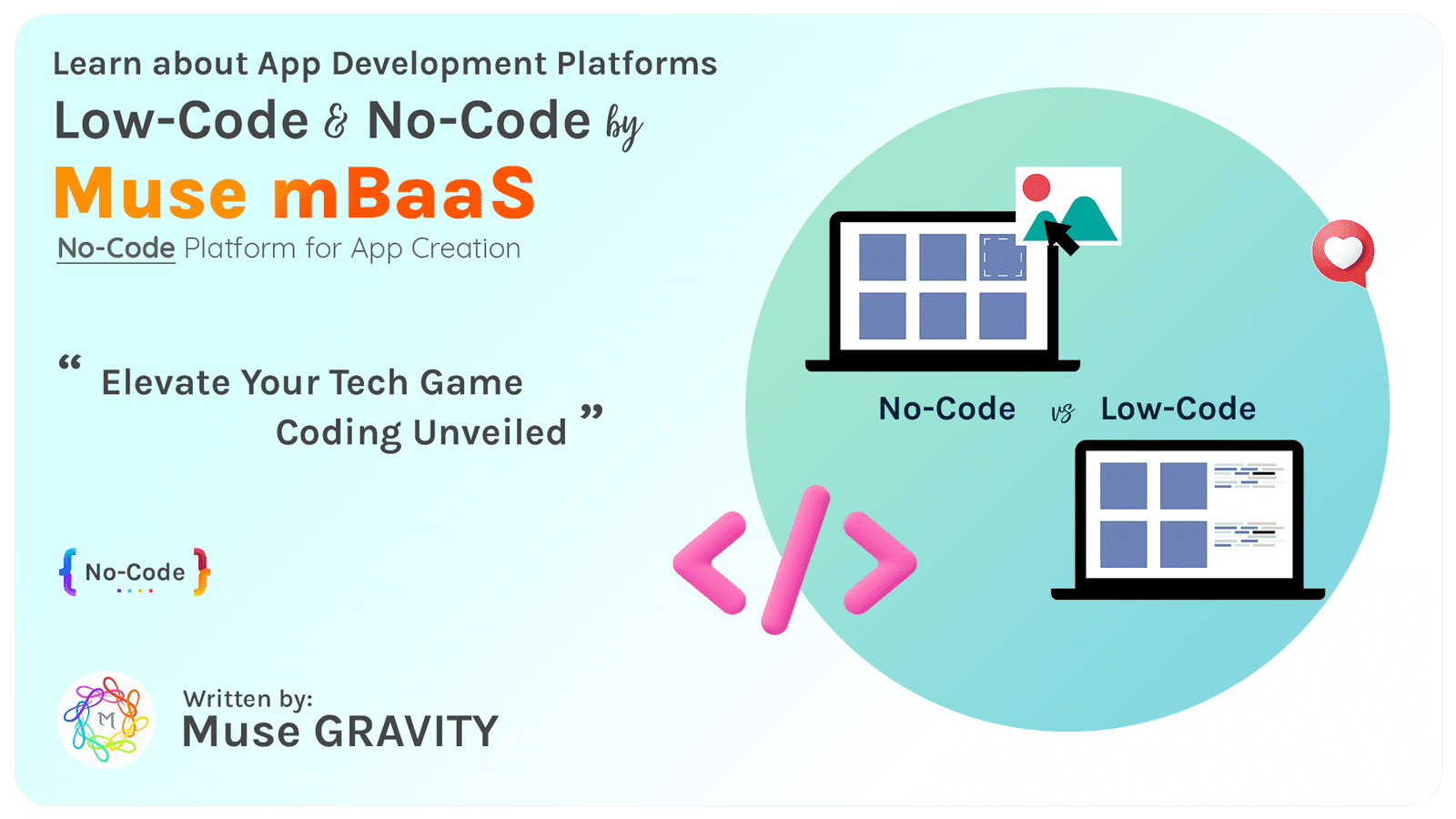
The Future of Work (No-Code & Low-Code)
Comparing No-Code and Low-Code
Target Audience:
- No-Code: Aimed at non-technical users like business analysts, entrepreneurs, and other professionals.
- Low-Code: Geared towards professional developers and IT staff, offering more technical flexibility.
Technical Requirement:
- No-Code: Requires no prior coding knowledge; entirely visual with drag-and-drop interfaces.
- Low-Code: Some coding knowledge is needed; it offers a mix of drag-and-drop components and custom coding.
Complexity and Flexibility:
- No-Code: Best for more straightforward applications; limited customization due to the absence of coding.
- Low-Code: Suitable for more complex applications; allows deeper customization and integration.
Development Speed:
- No-Code: Speedy development due to pre-built templates and intuitive design.
- Low-Code: Faster than traditional coding but may require more time than no-code for customization.
Use Cases:
- No-Code: Ideal for essential apps, business process apps, eCommerce Apps, and prototypes.
- Low-Code: Better for complex enterprise-grade applications, systems integration, and extensive data handling.
Key Features of No-Code Platforms
- Intuitive Design Interface: These platforms offer a user-friendly visual environment, often with drag-and-drop functionality, making app development accessible to non-technical users.
- Pre-built Templates: They provide a variety of ready-to-use templates that users can easily customize, significantly speeding up the development process.
- Integration Capabilities: No-code platforms typically allow integration with various databases, APIs, and web services, enhancing the app's functionality.
- Scalability: Designed to meet expanding business needs and handle increasing workloads and user growth.
- Security: They have robust security features to protect applications and sensitive data.
- Collaboration Tools: Many no-code platforms include tools that facilitate team collaboration and efficient project management.
- Cross-Platform Accessibility: These platforms enable the creation of apps that function seamlessly across different devices and operating systems.
- Customization Options: While customization might be limited compared to low-code platforms, no-code solutions still offer a range of features and flexibility.
- Reporting and Analytics: Built-in tools are available for monitoring app performance and user interactions, providing valuable insights.
Key Features of Low-Code Platforms
- Intuitive Design Interface: These platforms offer a user-friendly visual environment, often with drag-and-drop functionality, making app development accessible to non-technical users.
- Pre-built Templates: They provide a variety of ready-to-use templates that users can easily customize, significantly speeding up the development process.
- Integration Capabilities: No-code platforms typically allow integration with various databases, APIs, and web services, enhancing the app's functionality.
- Scalability: Designed to meet expanding business needs and handle increasing workloads and user growth.
- Security: They have robust security features to protect applications and sensitive data.
- Collaboration Tools: Many no-code platforms include tools that facilitate team collaboration and efficient project management.
- Cross-Platform Accessibility: These platforms enable the creation of apps that function seamlessly across different devices and operating systems.
- Customization Options: While customization might be limited compared to low-code platforms, no-code solutions still offer a range of features and flexibility.
- Reporting and Analytics: Built-in tools are available for monitoring app performance and user interactions, providing valuable insights.
Success Story: Transformative Impact of No-Code/Low-Code Platforms
In Retail: The retail industry has significantly transformed thanks to no-code/low-code platforms. Retail businesses, from small boutiques to large chains, have rapidly leveraged these platforms to develop and deploy eCommerce applications. For example, a small retailer previously limited to a brick-and-mortar presence could quickly transition to online sales by building a user-friendly eCommerce site using a no-code platform. This shift expanded their market reach and offered customers an enhanced shopping experience with features like personalized recommendations, seamless checkout processes, and real-time inventory updates. For larger retailers, low-code platforms have enabled the integration of advanced features such as AI-driven analytics for customer behavior, supply chain management, and predictive inventory control, leading to improved operational efficiency and customer satisfaction.
Overcoming Challenges in No-Code Platforms
- Boosting Security: To keep your data safe, it's essential to use no-code platforms that have robust security measures in place. Regularly updating the platform is vital to protect against new security threats.
- Expanding Integration Capabilities: Sometimes, you might need your no-code platform to work with your existing software or systems. Make sure the platform can connect with these systems easily. You might need additional services (like third-party integrations) to bridge the gap if it can't.
- Enhancing Customization: Choose a no-code platform that offers a wide range of features and is flexible enough to meet your business needs. This way, you can tailor the no-code platform to do the precise work you want, even though you're not coding it from scratch.
- Bridging the Skill Gap: Not everyone knows how to use these no-code platforms effectively. Providing training and resources to your team can help. Also, encouraging people from different parts of your business to work together can lead to better use of the platform and more innovative solutions.
Overcoming Challenges in Low-Code Platforms
- Simplifying Complex Integrations: To ensure the low-code platform works well with your existing systems and databases, you might need to use advanced tools like APIs (Application Programming Interfaces) and middleware; this helps in creating a smooth connection between different software systems.
- Managing Growth Effectively: When choosing a low-code platform, look for one that can handle increased users and workload without hiccups. It's also essential to consider how your business might grow and choose a platform that can grow with you.
- Mixing Skills in the Team: It's beneficial to provide training on the more technical aspects of the platform, especially for those who aren't developers. Encouraging teamwork between your tech-savvy developers and those with less technical backgrounds can lead to more effective platform use.
- Reducing Reliance on Vendors: It's wise to carefully assess the company that provides your low-code platform. Check how stable they are and what kind of support they offer. Also, have a backup plan in case you encounter issues with the vendor down the line.
- Keeping Applications Up to Date: Regularly check and update the applications you've built using the low-code platform to ensure they continue to meet your business's changing needs. Set aside time and resources for ongoing updates and maintenance to keep everything running smoothly.
No-Code/Low-Code for Entrepreneurs: Increase Business Growth
For entrepreneurs navigating the fast-paced and competitive world of startups, no-code/low-code platforms are invaluable tools. These platforms significantly lower the barriers to entry in the digital space, allowing entrepreneurs to swiftly bring their ideas to life without the need for extensive coding knowledge or hiring a team of developers. It is particularly beneficial in the early stages of a startup, where resources are often limited, and the ability to quickly iterate and refine a product can be the difference between success and failure. With no-code/low-code platforms, entrepreneurs can easily create prototypes and test their ideas, enabling them to validate and adapt their concepts with minimal investment. This rapid prototyping is not just cost-effective but also accelerates the process of innovation, allowing entrepreneurs to explore and experiment with different ideas more freely.
Moreover, these platforms can be a catalyst for business growth, especially when it comes to mobile applications. In today's mobile-first world, having a presence on smartphones is crucial for businesses to stay connected with their customers. No-code/low-code platforms make it easier for entrepreneurs to develop mobile applications that directly reach and engage their target audience. These applications can serve various functions, from providing a seamless shopping experience to offering personalized customer service. By leveraging the power of mobile apps, businesses can significantly enhance their customer interaction, leading to increased customer satisfaction and loyalty. The ability to quickly launch and update these apps in response to customer feedback or market trends further ensures that businesses can stay ahead of the curve, continually driving Growth and maintaining a competitive edge in their respective industries.
Cost of Building an App with No-Code and Low-Code
One of the most appealing aspects of no-code/low-code platforms is their cost-effectiveness. Building an app with these platforms can significantly reduce development costs, as they require less time and resources than traditional coding. The cost savings also extend to maintenance and updates, making it a financially viable option for businesses of all sizes.
Revolutionizing App Development: How Muse mBaaS is Redefining the No-Code Landscape
No Credit Card Required
















